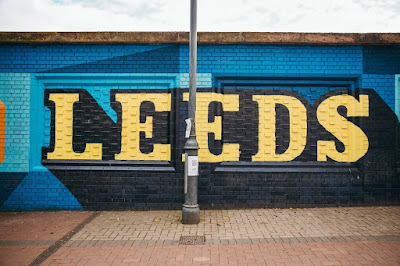We recently attended a couple of exhibitions in Leeds while we were visiting some friends. First was ‘Becoming Henry Moore’ at, yes you guessed it, The Henry Moore Institute. Once lauded as the greatest British artist of the 20th century, Moore has (in recent years) been usurped by the great sadomasochistic gambler, Francis Bacon; where, in the battle for the representation of the human form, Moore has become the muted child constantly out-screamed by his ‘pope-wielding’ disorderly sibling.
But where Moore regains that voice against Bacon however, is in his drawing (not least due to Bacon’s spurious claim that drawing was never part of his practice) in this exhibition, Moore’s early ideas are alive with a sense of movement and even urgency, that reflects at least an aspect of Bacon’s supine fragility of the flesh, which lies beneath this sculptor’s weighty forms – this is where Moore’s osseous matter melts away before your very eyes, and here instead, we see the skeleton of an idea. Moore’s beginnings lay bare.
The exhibition highlights the influence of early visual language – tribal art that would go on to influence Modern Art – language equally appropriated by Picasso, which would become a tertiary influence on Moore – along with sources from publications from the British museum – black and white shots of Aztec and Cycladic works studied enthusiastically for particular sculptural cues.
But the real source of Moore’s later sculptural weight is to be found through juxtapositions with works from Rodin and Michelangelo, a reflection of Moore’s sense of sculptural muscle – rather than any Baconian mortality – that of immutable stone; like bone to Bacon’s flesh.
Sometimes it’s difficult and frustrating to have to look for what one might find interesting in an exhibition but it can be rewarding. Initially this didn’t seem like something we would be particularly into but we were pleasantly surprised.
We then went to the Tetley which was showing an exhibition by Saelia Aparicio titled Your Consequences Have Actions. The main focus of which seemed to be something along the lines of, what is our relationship to the limitations of our bodies, minds and the urban spaces in which we live. A fairly thought provoking subject matter which never quite seemed to lead us down anywhere of interest. Inside the main space are a set of twelve hand painted wooden stools representing crouching women which viewers are invited to move around and sit on. Their varied natural shades represent various human skin tones. They could be read either as a comment on the covert systems of exploitation which prop up the so-called first world or, equally, an elaborate joke. It felt a bit obvious and not allowing the audience any autonomy to make up their own mind as to what might be going on. It felt more like a demonstration of Aparicio’s ability to realise drawings in sculpture, which is largely what the show consists of.
Got some really great looking books for Christmas!
The New Dictionary of Art by artist Robert Good, where you can take your pick from over 3,000 definitions compiled from the internet via chat-rooms and discussion forums as well as from the more established authorities, artists and institutions. Weird but powerfully provocative and a thoughtful idea.
Death 24x a Second by Laura Mulvey was another one, which we’ve been meaning to get out of the library since a tutorial we had a few weeks back so now we have no excuse! How To Not Be A Boy by Robert Webb, another one we’ve been meaning to read after watching countless interviews with him explaining his motivations around writing it. It’s something that really (and this is such a frustrating phrase but for lack of a better one) ‘spoke to us’ with regards to the way in which a large portion of men, us included, repress all their emotions other than anger because that’s the only one their ‘allowed’ to express. Which leads to imposing their shit on everyone else because they don’t have the emotional skills to communicate sadness or anxiety or fear so they just get angry. And finally I Call Myself A Feminist which is a variety of view from 25 different women on all number of topics such as is the word feminist still to be shunned? Is feminism still thought of as anti-men rather than pro-human? Is this generation of feminists - outspoken, funny and focused - the best we've had for long while? Has the internet given them a voice and power previously unknown? Very excited to be more informed.
That’s all folks! Sid and Jim, signing out for 2017, see you on the other side.
































